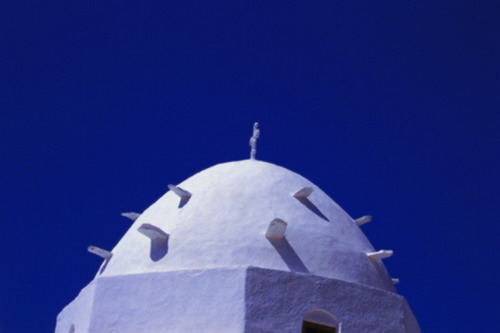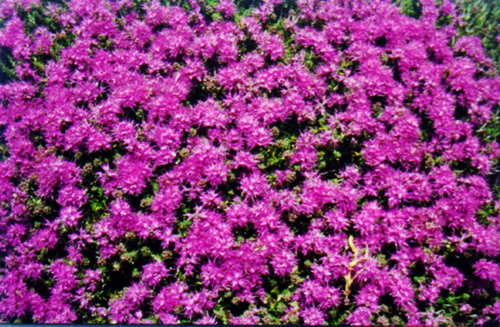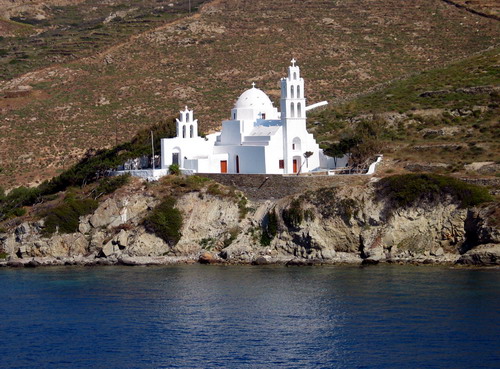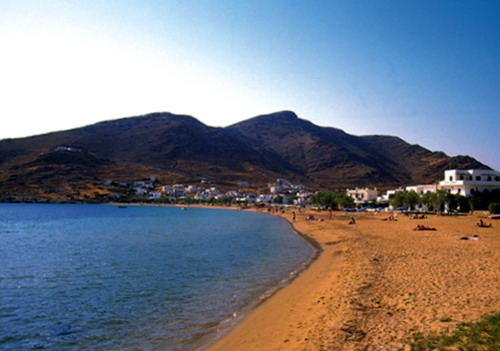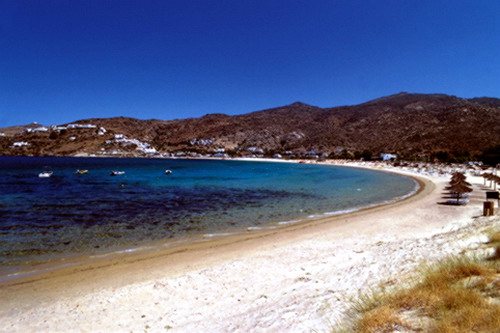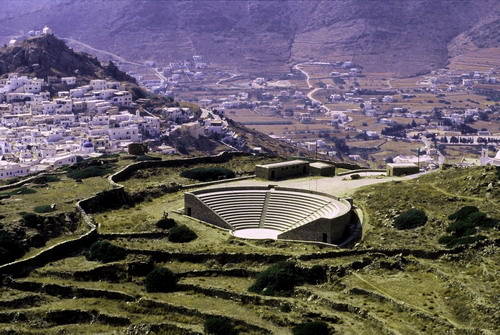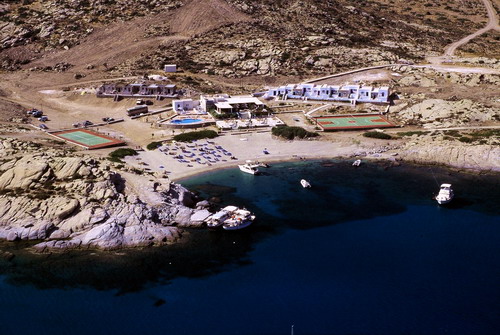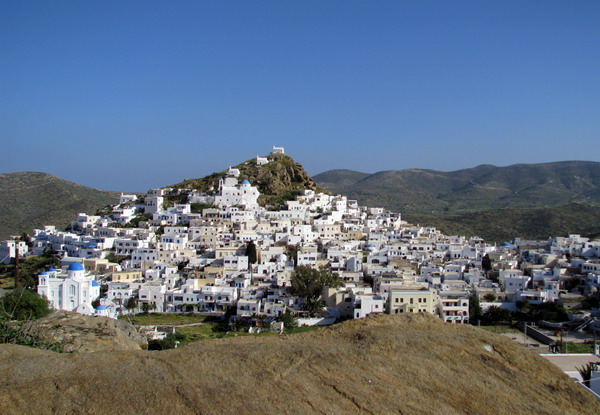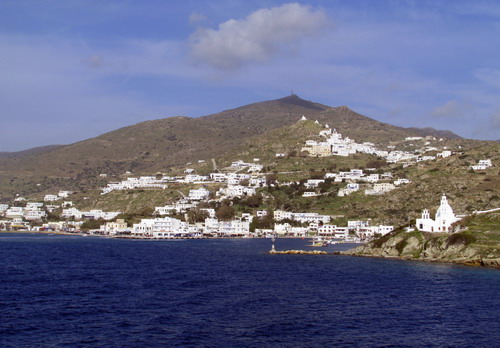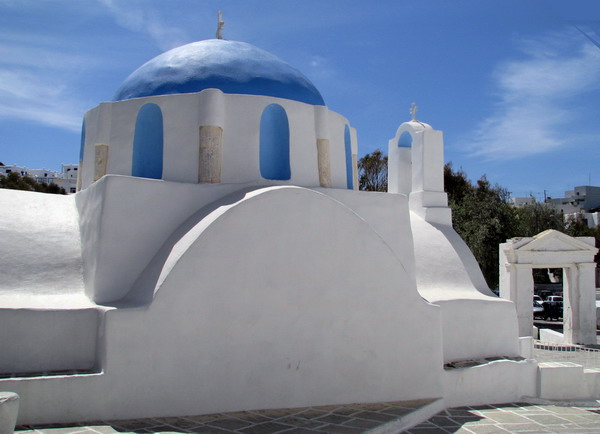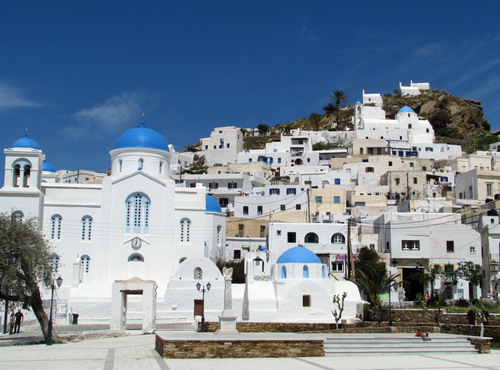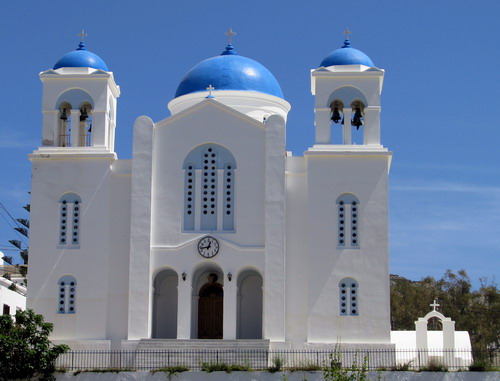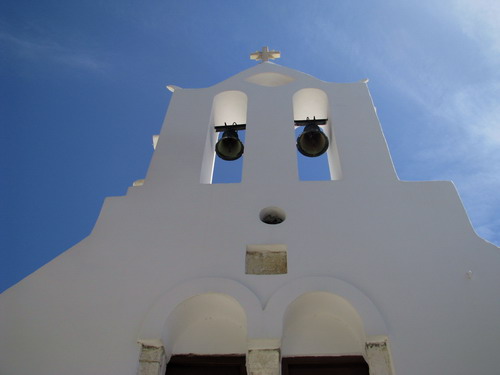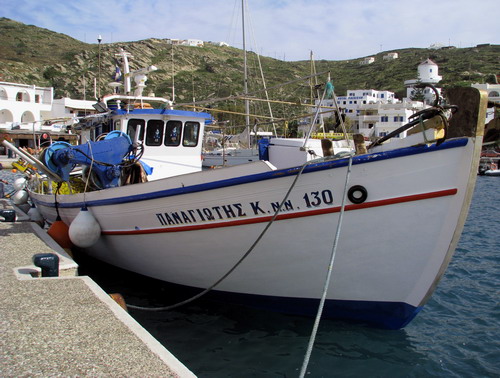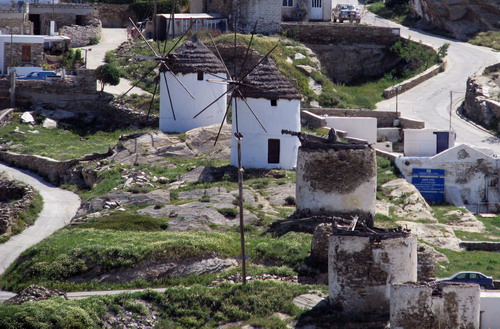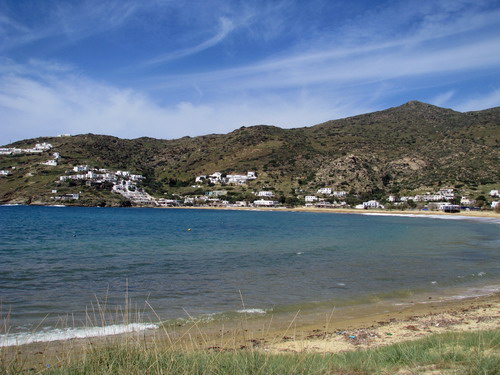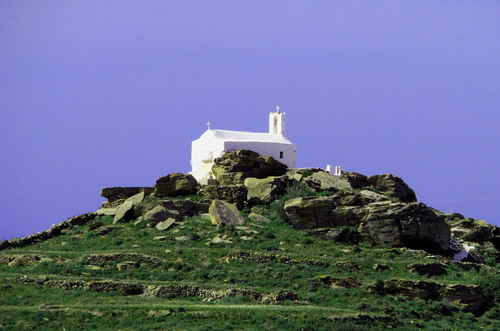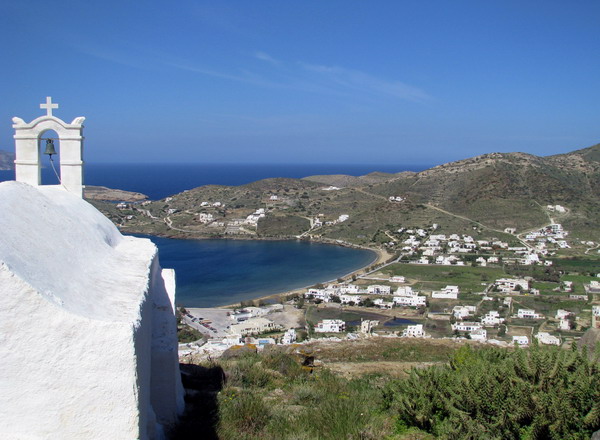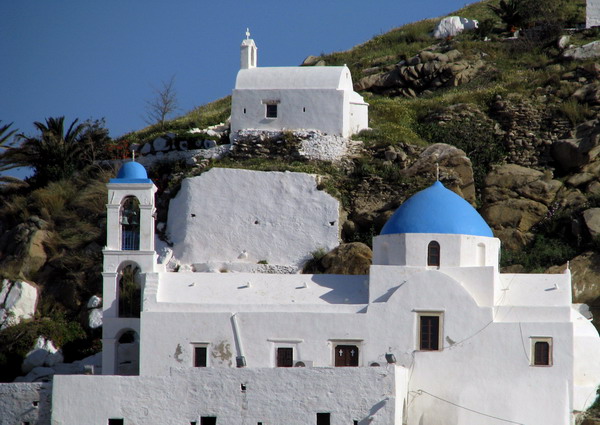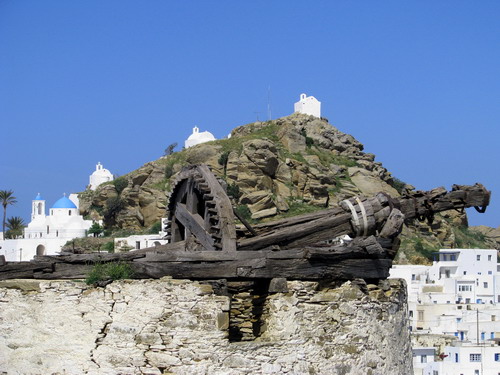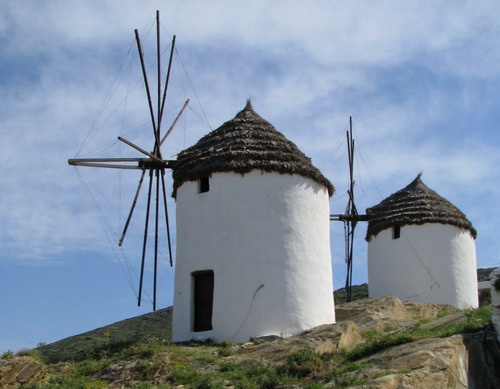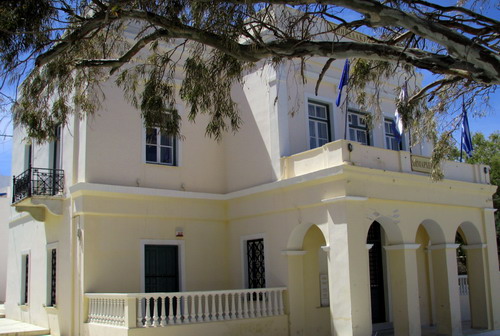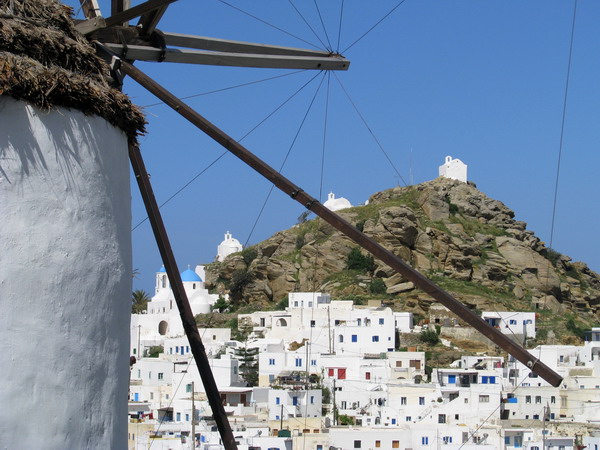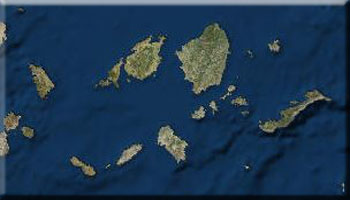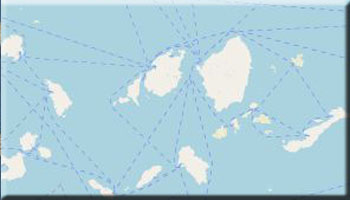Ios, one of Greece's most beautiful islands, rises from the Aegean's endless blue sea. A small island noted for its expansive sand beaches, pristine waters, and picturesque coves, it lies between Santorini, Paros, Naxos, and Sikinos.
The island has a total shoreline of 86 kilometers, of which 32 kilometers are sand beaches.
Ios covers an area of 108 square kilometers, and is 17 kilometers long and 7.5 kilometers wide at its most distant points. It's 108 nautical miles from Piraeus - an eight-hour sea journey by ferry from Piraeus and about four hours by high-speed boat from Rafina.
In summer, there are frequent sailings to and from Piraeus; in summer, the island is served by 20 arrivals and departures daily, while in winter there are two daily sailings. Ios also offers ferry and high-speed sea connections to Paros, Naxos, Santorini, Mykonos, Sikinos, and Folegandros.
The island's history parallels the history of the other Cyclades.
Ios is known as the home of Clemene, mother of the greatest epic poet of all time, Homer, who wrote The Odyssey and The Iliad in the eighth century B.C. Homer's grave is at Plakotos and in local lore he died on the island while trying to solve a riddle he was told by fishermen at Plakotos.
The earliest signs of inhabitation on the island suggest it the influence of settlers from the shores of Asia Minor. The island later witnessed the destruction of Minoan civilization (2000-1500 B.C.) on Santorini from a volcanic eruption. The Dorians and Ionians arrived on the island sometime around 1100 B.C. and gave it its present-day name. Ios joined the Athenian League (or Confederacy). In the early 13th century, it came under Venetian rule; in 1397, Marcus Crispus, the island's governor, fortified Hora with defensive walls (Kastro), whose ruins are visible today.
In 1537, the island fell to the Turks, who dubbed it "Little Malta" because the natural shelter offered by its harbor. The island suffered under its Turkish rules, who imposed heavy taxes and other punishments. During this time, the island also suffered from pirate raids.
The island claims among its native sons Spyridon Valetas (1718-1843), a member of the revolutionary Filike Etaireia who distinguished himself in the Greek war of independence. Valetas later became the first Minister of Education of the Modern Greek State.
- The 17th-century church of Ayia Irini near the port's mouth.
- Homer's grave at Plakoto.Ruins of an ancient aqueduct at Plakoto.
- The church of Ai Georgis at Yialos.
- Panayia Gremiotissa in Hora; the church is a fine example of Byzantine architecture and is dedicated to the Dormition of the Virgin.
- Panayia Katholiki.
- The church of Evangelismos (Assumption), the island's cathedral.
- Ruins of the Byzantine castle at Paliokastro.
- Psathopyrgos at Plakoto.
- Ayios Ioannis at Kalamos.
- Ayios Ioannis at Pyrgos; the church is built over the ruins of a temple dedicated to Apollo.
- The Anemomyloi quarter with its 12 windmills.
- The modern 1,000-seat open-air marble Odysseus Elytis Theater.
- The Folk Museum
- The Ios Archaeological Museum
- The Modern Art Museum at Kolitsanous.
- Koumbara (Blue Flag)
- Mylopotas, one-kilometer stretch of beach of golden sand and sparkling waters (Blue Flag).
- Kalamos, on the eastern shore; recommended for diving and snorkeling.
- Secluded beaches at Papas, Plakes, Kambaki, Plakotos, Petalidi, Neraki, Diamouda, Sapounohoma, Valmas, Kolitsani, Klima, Pikro Nero, Tzamaria.
- Manganari, a string of five open coves with soft sand and shimmering waters.
- Ayia Theodoti
- Psatha
- June 24: the paniyiri (religious and folk celebration) of Ayios Ioannis Prodromos at Monastiri in Pyrgos.
- August 29: the paniyiri of Ayios Ioannis held at Psathi and Kalamos at the same time.
- September 7-8: the paniyiri observing the birth of the Virgin at Ayia Theodoti and Paliokastro.
- August 15: the paniyiri at Panayia Gremiotissa in Hora.
- August 21: the paniyiri of Mersinia observing the feast of the Virgin.
- Paniyiri observing the feast of Ayios Georgios at Vourlidakia.
- The paniyiri of Ayios Nikolaos at Koumbara, held a few days after the saint's feast day on December 6.
- The "Homereia", a program of cultural events in honor of Homer organized under the aegis of UNESCO every May.
| MUNICIPALITY OF IOS | 2286360400 |
| CITIZENS SERVICE BUREAU (KEP | 2286360419 |
| HEALTH CENTRE | 2286360000 |
| HARBOR POLICE | 2286091264 |
| POLICE STATION | 2286091222 |
| BUS STATION | 2286092015 |









